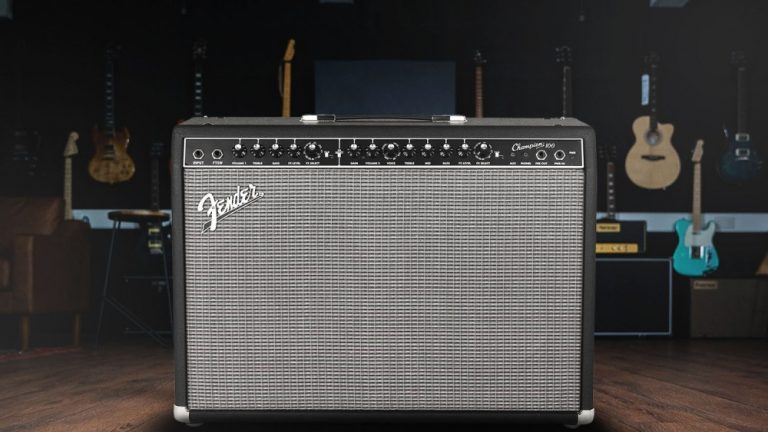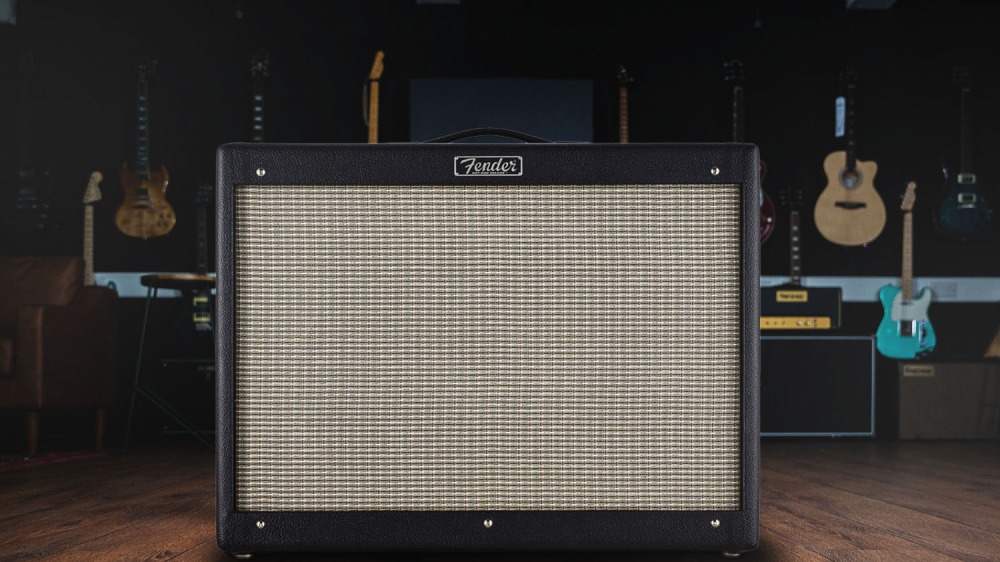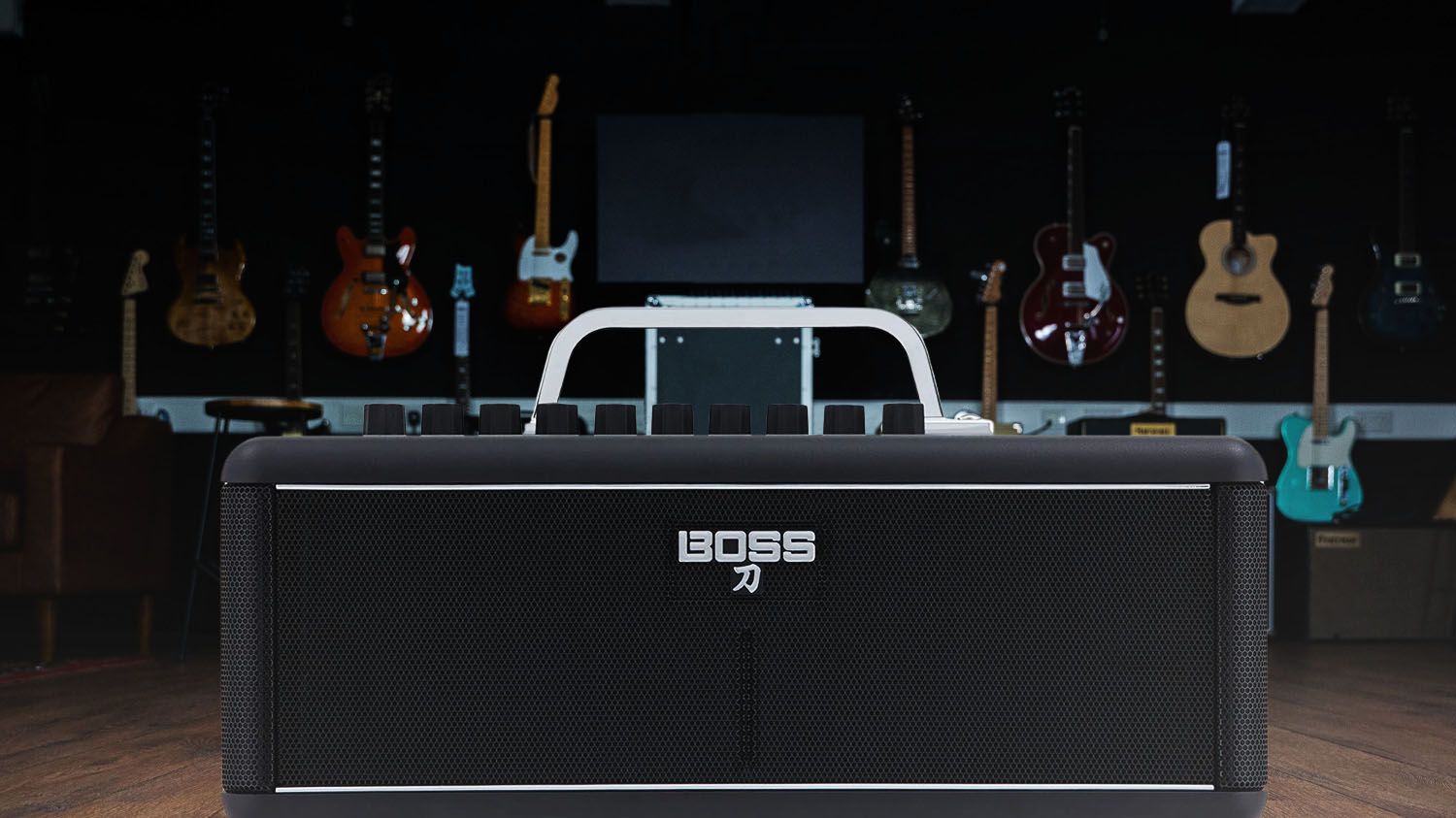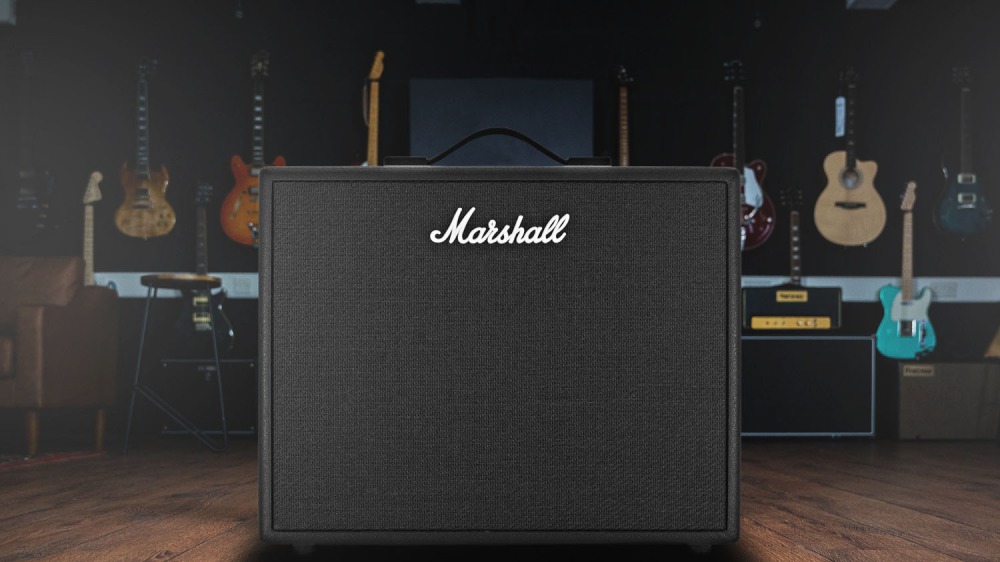Whether you got your first guitar or planing or getting one, I know that there are some questions that are bothering you.
- How Do I Buy An Amp?
- What Kind Of Amp Should I Get?
- How Many Watts Will Be Enough?
- Do I Need These Features?
- What About Speakers?
Yes, I know that it is overwhelming, talking from experience here. There was a time that I didn’t know anything about amps how they worked, what do they do, or what is the importance of one, I just knew that I required one to play guitar. But with some research and thought put into the issue, I can say that I am pretty well informed.
Table of Contents
For starters, you do not need to know how all the advanced features work, you will learn that with experience. I want to dedicate this article to first time buyers and people that want to upgrade from their run of the mill amps to something a little more refined.
The realm of amplifiers is a little confusing, as there is a lot of electric work that will affect the final sound. Circuit boards, wattage, tubes, they all do their part to achieve the warm, bright, dark, punchy, or whatever the sound you want to achieve. The amp will either help you or stop you from achieving the sound you are looking for.
A Quick Look
The Top 7 Best Guitar Amps
7. Orange Crush Pro CR60C
.jpg)
Orange’s Crush Pro series has provided excellent amplifiers for electric guitars, bundled with features, channels, portability, tones, and power. The Orange Crush Pro CR60C is not a budget product, however, it is still priced under $500 and I think it is still a bargain considering its 60 watts of power makes it ready for gigs.
First off this solid-state amp has a beautiful design that comes in the trademark Orange color, and if you are a little on the conservative side there is the Black version available. This amp has a high-gain preamp and has two channels you can choose from, clean and dirty.
The controls of this amp are located on the top panel, consisting off the volume, bass, middle, and treble for both of the channels. It has EQ for each panel separately, a feature that I adore, allows you to shape your tone to your liking.
This portable amp weighs just 44-pound making it perfect for both practice and gigs. I found the preamp capable of delivering every tone decently, most notably the clarity which was one of its strongest points.
You can connect multiple pedals through this amp and it could handle them excellently and consistently. The speaker was pretty good and it didn’t lose clarity with high gain and volume.
As we mentioned in our Orange Crush Pro CR60 review, this is one of the sweetest looking amps in the market.
6. Fender Champion 100

Fender’s Champion amp series has been one of the best gig-worthy solid-state amps. Delivering mighty power, good speakers, plenty of controls, features, and great tonal shaping. It is one of the most popular amps in the market, and it is not hard to see why considering its affordable price point for its performance.
First off the Fender Champion 100 has a simple design, with a black vinyl case and grill cloth with silver color. It has two 12-inch Fender Special Design speakers and has a mighty power of 100 watts, which should prove to be enough for most gigs, except concert arenas of course.
This amp has two available channels clean and drives, that have a wide range of effects for each consisting of the chorus, delay, reverb, wah, and flanger.
You will see that the Fender Champion 100 has an astounding number of control dials, but you can find a good use for all of them. There are volume, treble, bass, effect select and volume knob for each channel, plus a gain dial for the drive channel.
It may not be the most feature-rich amp on the market, but this will get the job done perfectly and will provide a wide range of tones you can work on.
5. Fender Hot Rod Deluxe IV

I don’t know if there is a guitarist that has been practicing his craft in the last 20 years that hasn’t heard or even played on a Fender Hot Rod amp. It is one of the most popular amps on the market, and its fourth-generation Hot Rod Deluxe IV is equipped with 40 watts of power, good speaker, amazing build quality and countless other features.
This time around this Hot Rod has a pine cabinet, which reduces its weight to 41 pounds in total. It is equipped with a Celestion A-Type speaker with a 12-inch 50-watt driver that produces bright highs and clean midrange thanks to its ceramic magnet.
This amp consists of two channels the clean and drive channel. The clean channel produces amazing brightness and the drive channel is great for high gain and distortion. In addition to them, it has one extra channel named More Drive, that is used for large gains.
There are three 12AX7 preamp valves, and for the power amp, it uses a pair of 6L6 valves.
The preamp works incredibly well and shapes the tone to your liking.
Due to its tube nature, I am really in love with this amplifier and I would recommend for those who want to rock and roll. If you want more information about it, you can read our Fender Hot Rod Deluxe IV review.
4. Boss Katana Air

The Boss Katana Air is the first true wireless guitar amp, yes it took so many years to manufacture one. Apart from that, the Katana Air delivers 20 watts of power in battery mode, and 30 watts in the AC mode. The battery is capable of 12 hours of nonstop playing time in a single charge, making it pretty handy. It is one of the best practice amps in the market.
The Boss Katana Air has five built-in amp tones consisting of Brown, Lead, Crunch, Clean and Acoustic. In addition to that you get 50 more effects you can mess with and you can store 6 profiles in the amp, you can organize and set them up via the Boss Tone Studio app that is available for both iOS and Android.
The performance of the Boss Katana Air is exceptional providing rich and expressive sounds and tones, and when you utilize the effects, the results are simply remarkable for a practice amp I truly did not expect this kind of performance.
As we mentioned in our full Boss Katana Air review, the wireless system works flawlessly and has a range of about 75 feet. It is the most portable amp in the market for sure. When considering the not so steep price, it is a great addition to your arsenal.
3. Marshall Code 50

If you ask people on the road to name an amplifier brand, most of the time the answer will be Marshall because it is simply iconic. The Marshall Code 50 is a modeling amp with a good balance between power, tones, features, and pricing. Besides being very affordable it provides excellent value, top-class from Marshall.
The Marshall Code 50 has a very simplistic design, it is essentially a big black cube with the marshal logo on the front, the control panel on top. As its name would suggest this amp has 50 watts of power output and a single 12-inch speaker. This amp provides a wide range of effects consisting of 14 preamp models, 4 power amp models, 8 speaker cab model presets, and additionally 24 more effects.
On top, you will find the control panel with distinctive knobs for gain, bass, mid, treble and volume knob. Directly above the knobs, you will spot a set of buttons that allow you to access more advanced controls and the range of effects.
The Marshall Code 50 thanks to its wide tonal shaping abilities and 50 watts of power it is perfect for home practice and gigging at your local bar. We called this as the best guitar amplifier for beginners in our Marshall Code 50 review.
2. VOX AC4HW1
.jpg)
Vox is a familiar brand if you have listened to British rock and roll from the early 50s until today. They have been the tools of choice of the most notable artists from The Edge to Brian May. The VOX AC4HW1 is the smallest tube model of the company and it provides plenty of power and excellent tones for its price that is a little closer to premium.
The VOX AC4HW1 has a turret board that is hand-wired providing a purer and precise vintage tone, that we have come to know and love. It sports a 12-inch Celestion G12M Greenback and has a timeless style that you won’t grow tired off.
It has all the essential controls and nothing but, they work extremely well though. They consist of a master volume, treble, preamp volume, and bass knobs. On top of that, it has a hot/cool switch that I found to be very handy in a lot of situations. The former giving a rich overdriven tone, while the latter delivered a top-boost tone.
The VOX AC4HW1 is capable of producing only 4 watts, but as I mentioned earlier it can comfortably compete with 20-watt solid-state amps in terms of volume and gain. I found that it delivers the classic Vox tones that are clean, smooth, well saturated, and warm when needed, absolute top craftsmanship.
In my detailed VOX AC4HW1 review, i mentioned that this amplifier has a vintage look, and that’s one of the main reasons why this is one of my favorites.
1. Peavey Backstage 10W

If I had to choose one amp for beginners, it would be the Peavey Backstage 10W. A solid-state amp that is pretty affordable and as its name implies has 10 watts of output. This combination makes a great amplifier for practicing and honing your guitar playing skills, and don’t worry you are not sacrificing tone with this.
The Peavey Backstage’s main selling point is its ability to fully emulate the tones of a tube amp, and I really couldn’t find a big difference between this and a true tube amp. On top of that this amp is very well built, it is very portable and a beautiful design. In addition to that, it has a custom speaker with a 6-inch radius, that is perfect for home application.
The controls of this amp are very basic but very clean and intuitive.
There is an overdrive knob that acts as a gain knob, a channel select knob, two-band EQ and that’s it, no cluster or confusion, the essential package for beginners.
Performance-wise the Peavey Backstage really punches above its weight class, with its ability to mimic tube amps. It worked perfectly with effect pedals to my surprise and I truly have no complaints with this amazing amplifier.
As i said in my detailed Peavey Backstage review, I wouldn’t recommend this amplifier for playing gigs and in front of crowds. However, it’s good enough for practicing in your home or studio.
When I write guitar buying guides, I always say get the one that you will love playing. However, it is not as simple when buying an amp, because so many factors come to play. I have played premium high-end guitars on rubbish amps, and you can’t achieve the tones, it just doesn’t click, everything is off. On the other side, I have played some cheaper guitars on some decent amps with good tonality and achieved excellent sounds with tons of groove. So it is really important as this can make or break your guitar experience.
There are a lot of factors you should look out for when buying an amplifier for your electric guitar, however, the most important are tone, power, and features.
You should consider the amp as a part of the instrument because it really is. Let’s see how do they work. First off the pickups on the guitar ‘pickup’ the vibration of the strings and produces a signal in the pickup coil. That signal then flows to the amplifier and that’s where the magic happens.
The signal firstly goes into the preamp tube, there are also solid-state amps but more to that later. In the preamp tube the sound is shaped with lows, highs, and mids, to achieve distortion, clean, warm, or whatever the sound you want to achieve. From there it goes to the power amp, and that is where the real amplifying happens, here your tones shaped from the preamp gain volume and then are outputted to the speakers.
There are mainly 4 types of amps you can get each having its own distinct advantages to suit your playings style.
Types Of Guitar Amplifiers
Tube and Valve Amps
These types of amps are considered the best of the best. Tube amps work with vacuum tubes in both stages to boost the sound signals. The sound coming out from this amps is more natural due to their extremely responsive nature to signals, depending on your touch, the tones will come out different. But I recommend these amps for a little more experienced players because a beginner can’t yield the best results from these more expensive amps.
Solid-state amps
These bad boys replace tubes with transistors to replace the signals, however, they don’t provide the same responsiveness and delicacy of the tube amps. Solid-state amps generally tend to have a harsher distortion that comes earlier and it is better for metal and hard rock genres. For beginner players, these are perfect because they are cheaper and lighter, plus they don’t require any maintenance.
Digital/Modeling amps
These are a little more advanced and confusing beasts. These rely on digital technology on the preamp stage to produce the authentic sound of an amp you are looking for. With these, you can achieve perfect tones and sounds. They are harder to work on though, because achieving the tone you are looking for may take hours, and there are just too many buttons and knobs.
Hybrid Amps
These amps usually combine two of the aforementioned methods. They either use half solid state half tube configuration, or modeling in the preamp and tube amp in the power amp stage. They are interesting as well, suited for some players that want a little more variety in their tones.
Acoustic Guitar Amps
These are used by acoustic guitar players. Even though you don’t need an amp to play the acoustic guitar, having one can improve your playing experience.
Power Of The Amplifier
Next up you should check out the power of your amp, and this truly depends on the setting that you want to play. For example, you won’t require a mighty amp for practicing at home or in the studio by yourself, but you might need a little more power if you are playing with a band in your local bar, and you will need the most powerful you can get if you are playing in concert arenas. There are also factors that determine power.
Wattage
You might have heard wattage when you have bought speakers or any other electrical device. This determines your amps power output, but that doesn’t mean the higher the wattage the louder or the better the amp, as this intertwines with other factors. For example, a 30-watt solid state amp will not have the same loudness as a 10-watt tube amp. I would recommend sticking to lower watts for beginners.
Configuration
This is maybe the simplest choice to make, as amp configurations come in two flavors: combo amps and separate amps. Combo amps are all in one package, the preamp, power amp and the speakers are in the same box. Separate amps come separately as the name implies, generally preamp and power amp in one box and speaker in a second box, but there are advanced configurations where the preamp, power amp and speakers all come in different cabinets. The former is portable and cheaper packages, and the latter is more flexible, advanced, and are generally priced in the high-end.
Size of the Speaker
Next up you should check the size of your speaker they are generally measured in inches by diameter and are commonly available in 8, 10, and 12-inch sizes. There is a predominant assumption that smaller ones are better for high notes, and the larger ones are one step ahead for low-end notes.
Features Of The Amplifier
Next up you should check out the features of the amp, as even the cheapest and smallest amps have tons of switches, knobs, ports and jacks, and buttons. It is not always better to splash out money for more features if you will never use them. Although, check for features that you know will use and will come handy. Let’s take a look at the features that you will need.
Channels
I generally tend to suggest two-channel amps to most users, because it is more available and because that is all you’ll need for beginners and intermediate guitarists. They usually have an overdrive mode and a clean mode, the more expensive ones having more and more.
Effects
In analog amplifiers, you will find reverb and chorus effects most of the time, however, hybrid and modeling amps are issued with tons of other effects from the most simple to the most flamboyant. More effects mean more fun and can work as a good introduction to pedals.
Outputs and Inputs
These are most commonly found on the back of your amp, and you can find a wide range of inputs and outputs that are clearly marked to avoid any confusion. From here you can connect extra speakers, pedals, recorders or mixers.
With the general factors out of the way let’s take a look at my choices for the best amps in the market, that have appropriate power, tones, features, looks, and provide excellent value for their price.
Conclusion
Here you have it, my fellow enthusiasts, I think that I have provided a good guide on amps, ranging from how they work, tone, power, features, and what you should look out for. If you choose one of my suggestions, I am glad to be of help. If you choose to go buy one in a shop make sure you take your guitar with you for the best outcome. Stick to my tips and you will not make a mistake now and in the future.
Until next time, rock on!

 (1).jpg)






